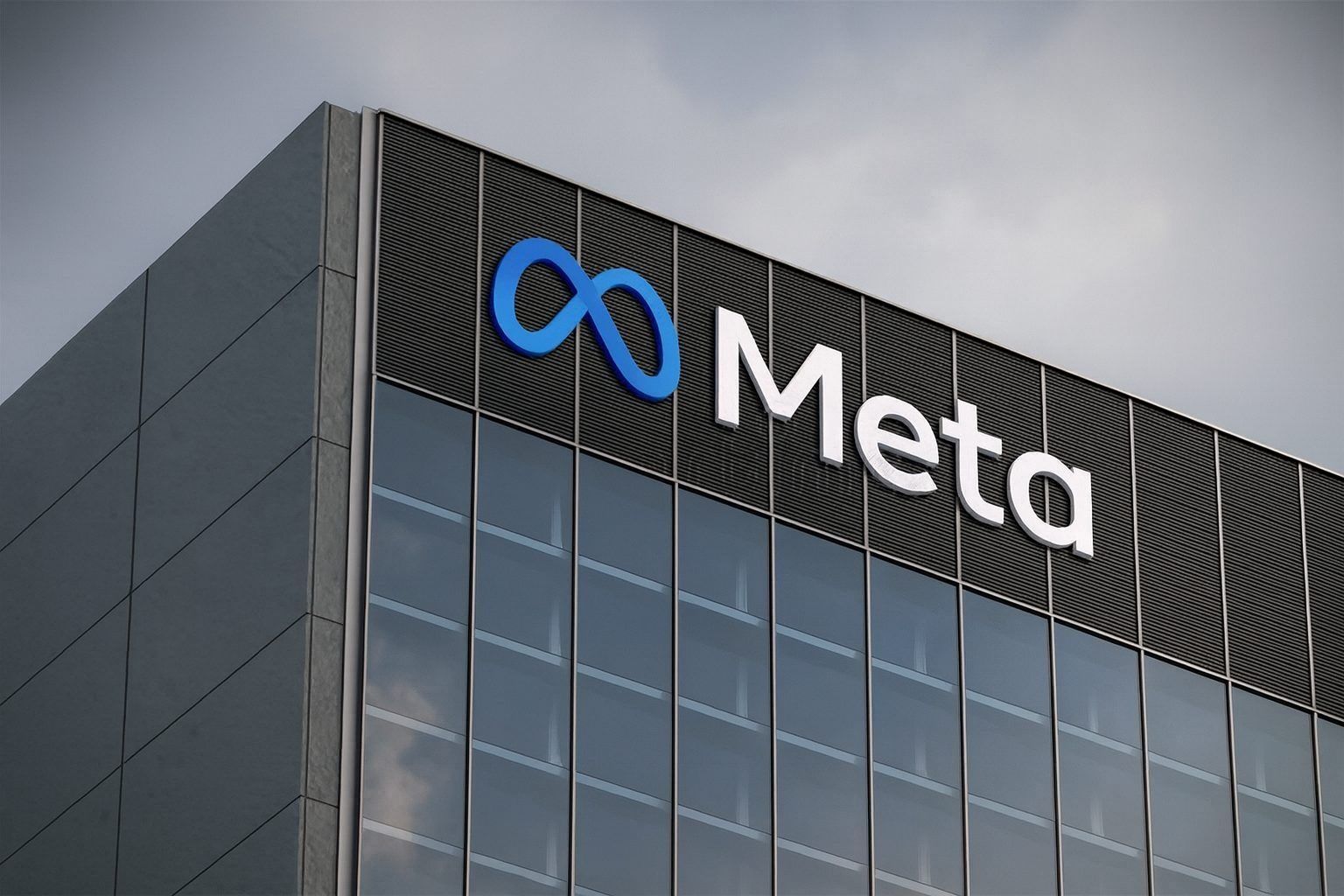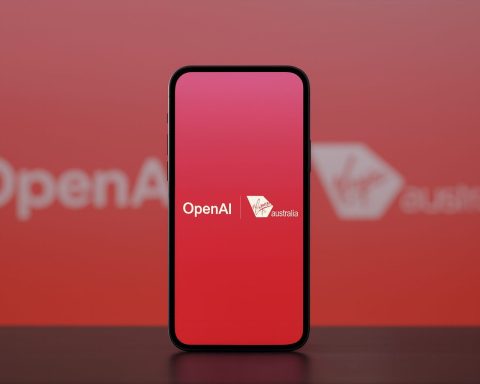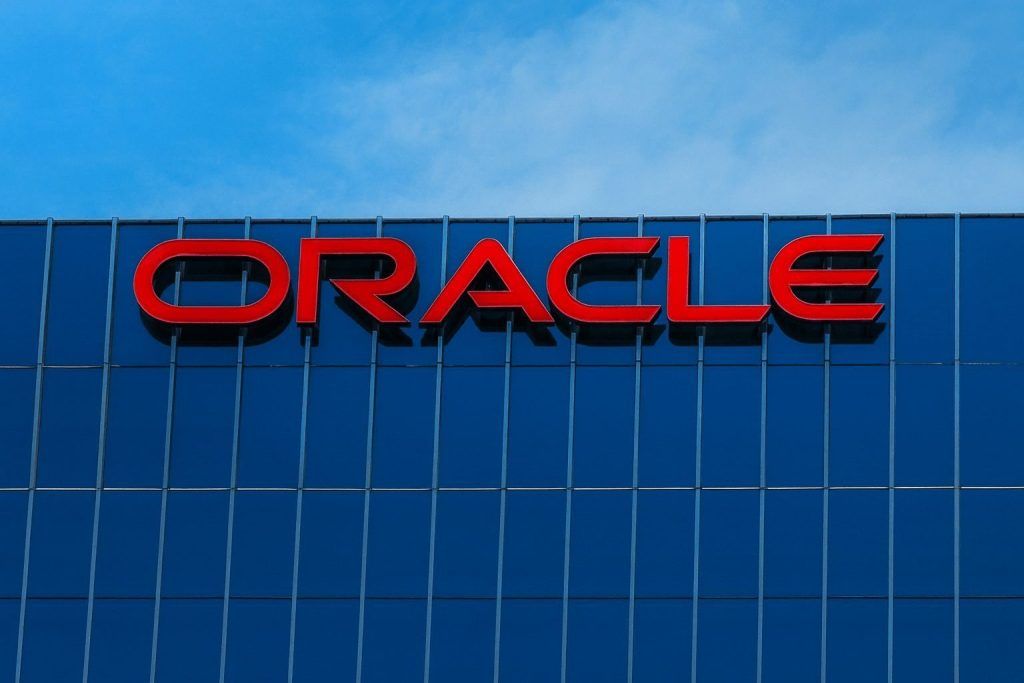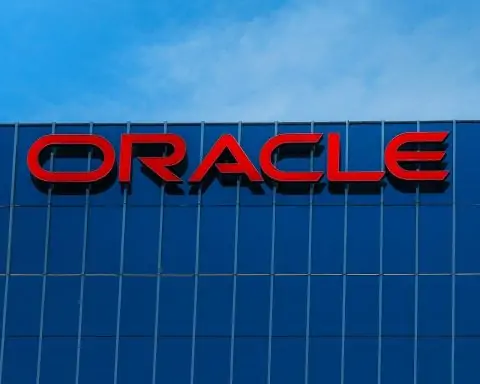Updated November 28, 2025
Meta Platforms is ending 2025 in a very “Schrödinger’s tech giant” state: at once a booming AI and ads machine, a metaverse hardware vendor, and a company under intense regulatory and legal fire. Revenue is surging, AI models are heading to space, VR headsets are all over Black Friday – and at the same time, leaked documents, court filings and antitrust probes are drilling into how Meta makes that money and how its apps affect society.
Here’s where Meta stands right now across financial performance, AI strategy, hardware, regulation and public trust.
Financial picture: revenue soars, profit optics get messy
Meta’s latest earnings show a company that is still an advertising powerhouse – and spending heavily to buy itself an AI future.
For the third quarter of 2025 (ended September 30):
- Revenue hit $51.24 billion, up 26% year over year.
- Operating income rose to $20.5 billion, giving a 40% operating margin, down slightly from 43% a year earlier. [1]
- Meta’s “Family” of apps (Facebook, Instagram, WhatsApp, Messenger and others) generated about $50.8 billion in revenue, while Reality Labs – the AR/VR division – contributed around $470 million and a quarterly operating loss of $4.4 billion. [2]
On paper, GAAP net income collapsed 83%, from $15.7 billion to $2.7 billion, with diluted EPS dropping from $6.03 to $1.05. But that plunge is almost entirely due to a one‑time, non‑cash tax charge of $15.93 billion tied to changes in U.S. tax law. Excluding that, Meta says EPS would have been $7.25, and the effective tax rate about 14% instead of 87%. [3]
Guidance underscores how aggressively Meta is leaning into AI infrastructure:
- Full‑year 2025 expenses are expected at $116–118 billion, up 22–24% year on year.
- Capital expenditures for 2025 are forecast at $70–72 billion, raised from a prior $66–72 billion – with much of that going into AI data centers and custom compute. [4]
Investors are split: social chatter and analyst commentary highlight concern about rising AI capex and near‑term profitability, even as revenue growth and user engagement stay strong. At the same time, Wall Street sentiment remains broadly positive, with dozens of “buy” or “overweight” ratings and a median analyst price target around $840 per share, according to Quiver Quantitative. [5]
Meta Superintelligence Labs, Llama 4 and a reorganized AI empire
If 2023–2024 were the years of Llama 2 and Llama 3, 2025 is the year Meta tried to industrialize its AI bets.
Llama 4 and open multimodal models
In April, Meta launched Llama 4, a new family of open‑weight multimodal models designed to handle text, images, video and audio in a single system. Early releases included Llama 4 Scout and Llama 4 Maverick, pitched as more efficient, context‑rich models for both consumer and developer workloads. [6]
Industry coverage has framed Llama 4 as powerful, but not universally beloved; some analysts argue Meta took too long to ship and struggled to articulate a clear narrative for this generation of models. [7]
Meanwhile, Meta’s broader Llama ecosystem has become a layered catalog:
- Llama 4 at the top end, emphasizing multimodal reasoning and long context.
- Llama 3.3, 3.2 and 3.1 powering many open‑weight deployments, including tiny 1–3B‑parameter models for edge devices and larger 70B+ models for cloud. [8]
These models underpin both the consumer Meta AI assistant and a growing developer ecosystem that can download, fine‑tune and host Llama models independently.
Meta Superintelligence Labs – and layoffs
To coordinate this push, Meta created Meta Superintelligence Labs (MSL) in mid‑2025, consolidating its core AI research, foundation models and product AI groups into a single division. The reorg was widely interpreted as a sign that Mark Zuckerberg wanted more direct control and clearer focus on building frontier‑level AI, including a next‑generation “Behemoth” model. [9]
But the unit has already gone through its first contraction. In October, Meta announced it would cut around 600 roles across Superintelligence Labs, hitting teams in the long‑running FAIR research group, product AI and AI infrastructure – while leaving a small “TBD Lab” (focused on the very largest foundation models) untouched. [10]
According to Reuters, the cuts come on the heels of a $27 billion private financing deal with Blue Owl Capital to fund Meta’s biggest data‑center project, effectively shifting some AI infrastructure risk to outside capital while keeping the AI roadmap intact. [11]
Llama in orbit: Space Llama on the ISS
Because 2025 wasn’t weird enough, Meta’s AI literally left the planet. In April, Meta and Booz Allen announced “Space Llama”, a fine‑tuned Llama 3.2 model deployed aboard the International Space Station to help astronauts work in low‑connectivity environments. [12]
The ISS deployment showcases one of Meta’s favorite talking points: Llama as a flexible, open stack that can run on everything from phones to constrained edge hardware in orbit.
Meta AI everywhere: WhatsApp, the Meta AI app and “personal superintelligence”
Parallel to its open models, Meta is racing to make Meta AI – its consumer assistant – unavoidable across the Meta universe.
Personalization and the Meta AI app
In early 2025, Meta upgraded Meta AI with deeper personalization, allowing the assistant to remember user preferences from chats in WhatsApp and Messenger and to tailor future answers accordingly – for instance, inferring a user’s device type or location and adjusting software recommendations or local suggestions. [13]
Then in April, Meta launched a dedicated Meta AI app on mobile and the web. The app:
- Acts as a hub for the assistant with persistent context and memory.
- Includes a Discover feed showing how others use AI.
- Connects tightly to Meta’s AI glasses, letting people move between glasses, phone and web while keeping the same AI context. [14]
Zuckerberg has wrapped this into a bigger vision of “personal superintelligence” – an AI layer that follows you across devices and apps, helping with work, creativity and daily life. Meta’s own materials describe this as an attempt to make powerful AI tools feel like a personal operating system for each user rather than just another chatbot. [15]
WhatsApp as an AI battleground – and a regulatory headache
WhatsApp is a critical front. Meta is integrating its own assistant directly into WhatsApp chats and WhatsApp Business, giving the company an enormous distribution advantage over rival AI bots.
That strategy is triggering pushback on two fronts:
- Competition and antitrust
- Italy’s antitrust regulator has expanded its probe into whether Meta is abusing dominance by integrating Meta AI into WhatsApp and blocking rival AI chatbots from using its business APIs. Regulators are considering interim measures that could suspend new terms or limit AI integration while the probe continues. [16]
- New WhatsApp Business terms introduced in October 2025 ban companies whose core product is an AI chatbot from using the platform, a move critics say could shut competitors out of WhatsApp’s tens of millions of Italian users. [17]
- Platform control
- The Verge reports that, starting January 2026, ChatGPT and Microsoft Copilot will be forced off WhatsApp, after Meta changed its business terms to prohibit non‑Meta AI chatbots from distribution via the API. That effectively leaves Meta AI as the only general‑purpose assistant on WhatsApp, tightening Meta’s grip on conversational AI distribution. [18]
The messaging app that once pitched itself as simple and neutral is quickly becoming a contested gateway for AI services – with Meta both platform owner and dominant participant.
Scam ads, DMA fines and antitrust: the regulatory vise tightens
Some of the most damaging headlines Meta has faced this year have nothing to do with the metaverse or chatbots, and everything to do with advertising fraud and privacy.
Internal documents: billions from scam ads
In November, Reuters reported on internal Meta documents indicating the company projected that around 10% of its 2024 revenue – roughly $16 billion – would come from ads promoting scams or banned goods. Meta reportedly estimated that users see around 15 billion “higher‑risk scam” ads per day across its platforms. [19]
According to those documents, Meta’s enforcement teams were even constrained by an internal cap that limited how much revenue their interventions were allowed to cost the company, effectively placing a price ceiling on anti‑fraud efforts. [20]
Following the investigation, U.S. Senators Josh Hawley and Richard Blumenthal called on the FTC and SEC to investigate Meta’s alleged scam‑ad windfall, citing concerns that Meta is profiting from deceptive advertising while consumers absorb billions in losses. [21]
Meta says it has reduced scam reports significantly over the past 18 months, but lawmakers are openly questioning whether the company has an incentive to be too lenient with high‑spending rogue advertisers. [22]
Europe’s Digital Markets Act: first fines and ongoing fallout
In April, the EU imposed its first‑ever fines under the Digital Markets Act (DMA) – and Meta was one of the inaugural targets. The European Commission found Meta non‑compliant over its “consent or pay” model, which forces users to either consent to personalized data tracking or pay for an ad‑free experience. Meta was fined €200 million, alongside a €500 million fine for Apple in a related case. [23]
Critics argue the decision stretches competition law to police data protection practices, effectively turning the DMA into a parallel privacy regime on top of the GDPR. Meta maintains that “consent or pay” is lawful under EU data‑protection rules and has challenged aspects of the decision. [24]
The pressure isn’t confined to Brussels: in late November, the UK’s Competition Appeal Tribunal ordered Meta to hand over a broad set of documents to a class‑action representative, including materials related to DMA investigations into its ad‑funded business models. [25]
Between EU enforcement, UK litigation and national probes like Italy’s WhatsApp AI case, the regulatory perimeter around Meta’s business model is clearly tightening.
Child safety, addiction lawsuits and the trust deficit
Meta’s legal and reputational problems are not just about competition and advertising. A growing wave of youth‑safety and mental‑health litigation has put the company’s internal safety culture under a microscope.
“17‑strike” allegations and unsealed child‑safety filings
Newly unsealed court filings in U.S. litigation over social‑media harms to children include testimony from a former Meta safety leader alleging that the company operated a “17‑strike” policy for accounts involved in sex trafficking – allowing up to 16 violations before permanent suspension. [26]
The filings also claim:
- Meta resisted implementing a dedicated reporting flow for child sexual abuse material (CSAM) on Instagram because it would be “too burdensome”. [27]
- Internal research repeatedly flagged harms from features like public “likes” and beauty filters for teens’ mental health, but recommended safety changes were delayed or reversed to avoid hurting engagement metrics. [28]
Meta denies misleading the public or regulators, saying the filings cherry‑pick documents and that it has invested heavily in teen safety in recent years. [29]
Social‑media addiction MDL
On the litigation front, a massive U.S. multidistrict litigation (MDL) now consolidates more than a thousand claims that Meta and other platforms designed products to be addictive and harmful to children and teens.
- By March 2025, plaintiffs had filed over 1,400 cases in the MDL, with numbers continuing to grow through the year. [30]
- Lawsuits allege a range of injuries linked to compulsive social‑media use, including self‑harm, eating disorders and suicide attempts. [31]
Courts have largely rejected broad attempts by defendants (including Meta) to dismiss these cases using Section 230 or First Amendment immunity at the early stages, allowing discovery and bellwether trials to move ahead. [32]
Content moderation rollback and misinformation
While these lawsuits work their way through the system, Meta has been loosening some of its content‑moderation commitments:
- In January, Meta confirmed it would phase out its third‑party fact‑checking program, which had partnered with external organizations to label false content, and move toward a user‑driven model similar to “Community Notes”. [33]
- Civil‑rights organizations and voting officials have warned that the shift could increase the spread of misinformation and hate speech, especially around elections. [34]
From the outside, it looks like a risky trade: Meta is simultaneously scaling back formal fact‑checking, ramping up AI‑driven feeds, and facing intensifying scrutiny over harmful content and youth safety.
The metaverse marches on: Quest 3S, Ray‑Ban Meta and holiday hardware
While the world argues about AI and moderation, Meta has not abandoned its hardware dream. In fact, Reality Labs is still losing billions per year, but with some visible consumer traction.
Quest 3 and Quest 3S in the spotlight
Meta’s Q3 report shows Reality Labs revenue rising to $470 million for the quarter, but the segment still posted a $4.4 billion operating loss. [35]
The hardware story in late 2025 revolves around:
- Meta Quest 3 – the flagship mixed‑reality headset.
- Meta Quest 3S – a cheaper model with slightly lower display specs but the same XR2 Gen 2 chipset and game compatibility, designed as an entry‑level device. [36]
Meta itself notes that Q4 2025 Reality Labs revenue will be lower year‑over‑year, partly because it is “lapping the introduction of Quest 3S” in last year’s holiday quarter and because retailers pulled forward some headset purchases into Q3 to stock up for the holidays. [37]
From a consumer perspective, however, Quest is very visible this season. Black Friday coverage across tech media and retailers highlights:
- All‑time‑low pricing and bundles for Quest 3S, with $50+ discounts and additional store credits at some retailers. [38]
- Quest 3 deals that pair the headset with sizeable gift cards instead of direct price cuts, effectively bringing down the cost for buyers. [39]
Meta’s bet is that a cheaper Quest 3S plus aggressive promotions will expand the headset’s installed base enough to justify continued platform investment – even if Reality Labs remains a sea of red ink for now.
Ray‑Ban Meta and Meta Ray‑Ban Display: AI on your face
Alongside headsets, Meta is pushing AI glasses as a more everyday on‑ramp to its ecosystem.
Key launches and updates in 2025:
- Ray‑Ban Meta (Gen 2) adds 3K Ultra HD video, improved battery life (up to 2× Gen 1), and upgraded audio, keeping the classic Ray‑Ban look while turning the glasses into camera, earbuds and assistant in one. [40]
- Meta Ray‑Ban Display, a more advanced model that incorporates a subtle display and pairs with an EMG wristband for neural‑style gesture control, moved from announcement to availability this fall. [41]
- Frequent software updates add new capture modes, translation capabilities and audio features across Gen 1 and Gen 2 glasses. [42]
Discounted pricing in Black Friday sales – with Gen 1 Ray‑Ban Meta glasses hitting all‑time lows at major retailers – suggests Meta is eager to seed the market and get more people used to wearing cameras and AI microphones on their faces. [43]
Threads and the social apps engine behind everything
Underneath all these experiments, Meta still lives or dies by its social apps – and those are quietly doing the heavy lifting.
From the Q3 2025 report:
- Family daily active people (the number of people using at least one Meta app per day) reached 3.54 billion, up 8% year on year.
- Ad impressions across the Family increased 14%, and the average price per ad rose 10%, a powerful combination for revenue growth. [44]
Meta is also turning Threads into a more credible rival to X:
- Zuckerberg reported that Threads has surpassed 150 million daily active users, up about 50% from 100 million in December 2024. [45]
- External data suggests Threads has, at points, overtaken X in key daily mobile usage metrics, at least on specific days, signaling a real shift in the post‑Twitter landscape. [46]
These numbers matter because the consumer apps – Facebook, Instagram, WhatsApp, Threads – are the data and monetization engine that fund Meta’s AI labs, VR hardware and legal defense budgets.
Investor calculus: can Meta spend its way to the next platform?
Tying all these threads (sorry) together, Meta in late 2025 looks like this:
- A hyper‑profitable ads business with 3.5 billion‑plus daily users and 26% revenue growth. [47]
- A massive AI build‑out centered on Llama 4 and Meta Superintelligence Labs, financed by tens of billions in capex and new external funding. [48]
- A hardware portfolio – from Quest 3/3S to Ray‑Ban Meta and Ray‑Ban Display – that’s gaining consumer traction but still deeply unprofitable. [49]
- A regulatory and legal storm cloud of DMA fines, antitrust probes, scam‑ad investigations and youth‑safety lawsuits that could reshape its business model. [50]
For investors and policymakers alike, the central question is whether Meta’s AI and hardware bets will generate enough new value – in assistants, glasses, immersive computing and developer ecosystems – to justify the staggering spend and the growing social and regulatory costs.
What’s clear is that Meta is not playing small ball anymore. It is trying, simultaneously, to be:
- The default AI assistant in WhatsApp, Instagram and Messenger.
- The leading open‑model provider with Llama 4 and successors.
- The key consumer VR/AR platform via Quest and Ray‑Ban Meta glasses.
- And still, the largest social‑media advertising business on the planet.
Whether that combination is sustainable will depend on how regulators redraw the rules, how users respond to ever‑present AI, and whether Meta can keep convincing markets that today’s enormous AI and metaverse bill is really a down payment on tomorrow’s platforms.
References
1. investor.atmeta.com, 2. investor.atmeta.com, 3. investor.atmeta.com, 4. investor.atmeta.com, 5. www.quiverquant.com, 6. ai.meta.com, 7. www.interconnects.ai, 8. www.datastudios.org, 9. en.wikipedia.org, 10. www.reuters.com, 11. www.reuters.com, 12. about.fb.com, 13. siliconangle.com, 14. about.fb.com, 15. www.meta.com, 16. www.reuters.com, 17. www.reuters.com, 18. www.theverge.com, 19. www.reuters.com, 20. www.nationthailand.com, 21. www.reuters.com, 22. www.reuters.com, 23. www.goodwinlaw.com, 24. itif.org, 25. globalcompetitionreview.com, 26. www.theverge.com, 27. www.theverge.com, 28. time.com, 29. time.com, 30. www.motleyrice.com, 31. www.lawsuit-information-center.com, 32. www.lieffcabraser.com, 33. news.northeastern.edu, 34. civilrights.org, 35. investor.atmeta.com, 36. www.meta.com, 37. investor.atmeta.com, 38. www.thesun.co.uk, 39. www.pcgamer.com, 40. www.meta.com, 41. www.meta.com, 42. www.meta.com, 43. www.theverge.com, 44. investor.atmeta.com, 45. medium.com, 46. www.forbes.com, 47. investor.atmeta.com, 48. ai.meta.com, 49. investor.atmeta.com, 50. www.goodwinlaw.com









